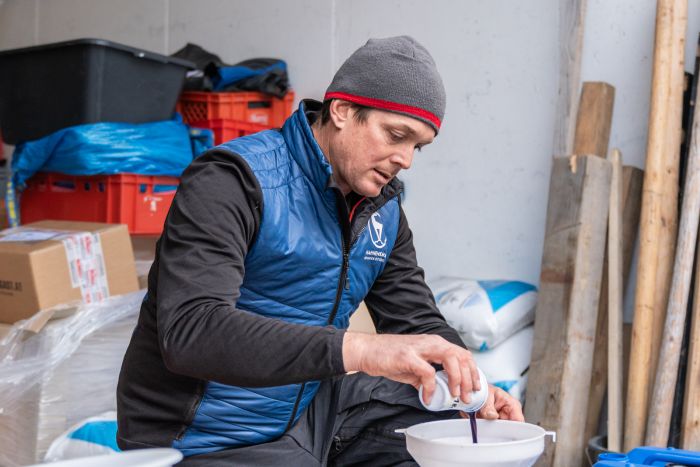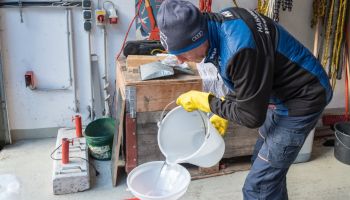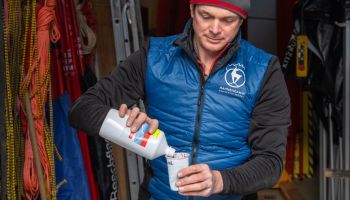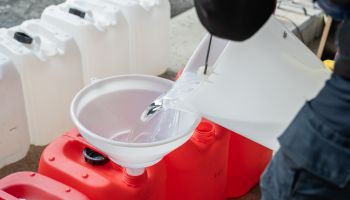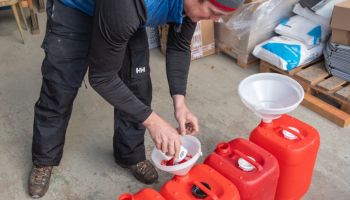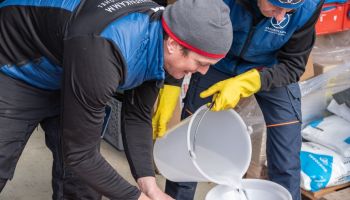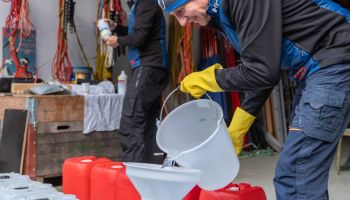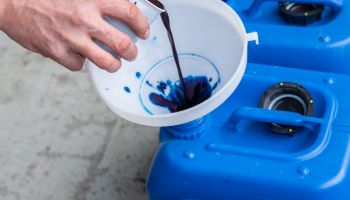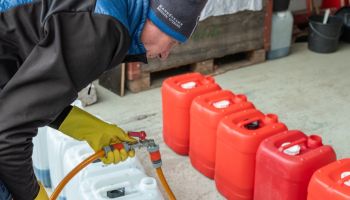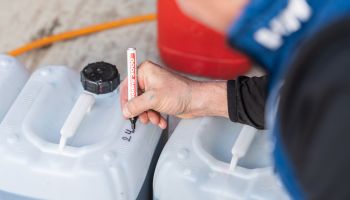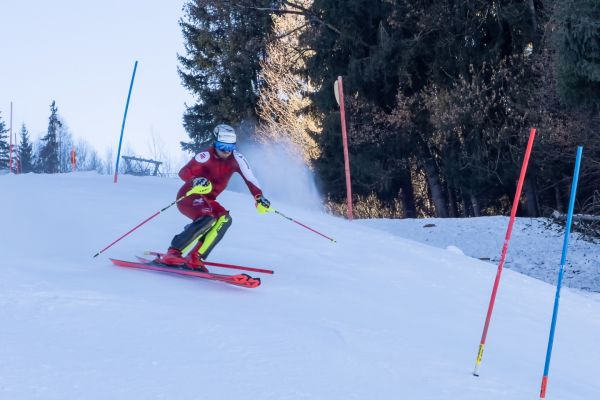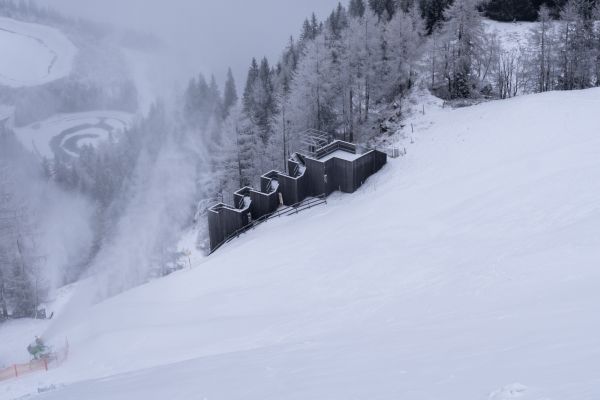It all boils down to the mix
Up to 1,000 litres of dye are carefully mixed for the Hahnenkamm Races. The poorer the visibility, the more important the markings are.
The blue lines along the World Cup racecourses are a blot on the landscape for winter-loving aficionados. These markings, however, are essential for the athletes as light conditions vary during runs and races. The lines serve for better orientation, while bumps are highlighted with horizontal markings. Production of the colour is a (small) science in itself and the story behind it quite entertaining.
In the old days, Kitzbühel marked the racecourses with twigs and pine brushwood, which was chopped so finely that only the needles remained. When the decision was made to work with blue and red markings, the initial choice was to work with the classic (and environmentally friendly) Easter egg dye: "But the mixture always left residues, so seals and pistons became clogged," recalls Gerhard Raffler from Kitzbühel Ski Club. A mixture with beetroot juice (red) or cranberry juice (blue) also didn't have the desired effect.
For over five years now, Kitzbühel Ski Club has been working with a colour concentrate procured from Adelboden in Switzerland. It is specially produced for marking ski slopes, is biodegradable, meets purity standards for food and does not present any health risk. The only thing that requires careful attention is preparation of the mixture, as ethanol is used.
"The paint canisters for our dye have a 20-litre capacity and we fill these with seven litres of ethanol, 13 litres of water and 180 millilitres of colour concentrate," explains Gerhard Raffler as he focuses on filling the canisters carefully together with Peter Widmoser. "Alcohol is an important element, because it prevents the colour from freezing. Our colourists can work at temperatures as low as minus 18 degrees without any problems."
"The colourists," by the way, belong to the team led by Sepp Reicht, who apply the lines marking the racecourses during Race Week. It is an arduous undertaking, as their equipment (paint canister and pump) weighs around 30 kilograms in total and all sections of the racecourses must be marked. Thanks to their skill and the task in hand, the team is also known as the "Picassos of the Streif".
Around 1,500 litres of dye were previously mixed for Race Week, but back then we still had the Super-G discipline, i.e., two different race lines on the Streif. "Nowadays we mix 800 to 1,000 litres. The nicer the weather, the less colour we need. Because when it snows, the dye naturally disappears when the course is cleared. However, there is always some of the up to 1,000 litres left over, which is used for other Ski Club races or next year's Hahnenkamm Race," says Gerhard Raffler, who uses gloves when mixing, as the paint can stain your skin for two to three days. But what is the colour red used for? "For the finish line and the lines for the split times," he explains.
Photo © K.S.C./alpinguin

